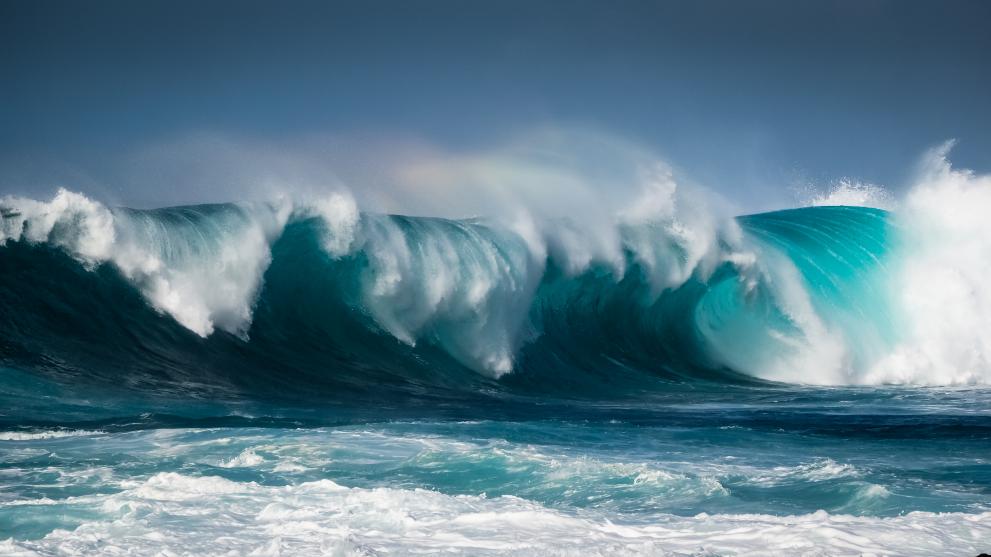
The Marine Renewable Energy market includes a variety of technologies, with offshore wind (bottom-fixed foundation in the seabed or anchored floating devices) being the most advanced. Other technologies such as ocean energy (tidal and wave power, ocean thermal energy conversion, salinity gradient), floating solar photovoltaic (FPV), and offshore renewable hydrogen production are all in the early stages of development.
In 2020, the European Commission published the Offshore Renewable Energy Strategy, which outlines the expected contribution of the Marine Renewable Energy sector to the EU with ambitions of being net zero emission by 2050. The strategy aims to grow Europe's offshore wind capacity from 12 GW to at least 60 GW by 2030 and to 300 GW by 2050.

The tremendous energy potential throughout Europe's sea basins and the global leadership position of EU enterprises in the industry is driving this ambitious growth. Floating offshore wind turbines, ocean energy technologies such as wave or tidal, floating solar installations, and using algae to make biofuels, are all examples of this dominant position.
Overall, floating wind technology opens up the possibility of harvesting the most resourceful wind energy sites in Europe. Indeed, Europe's technical potential for floating offshore wind is estimated at 4 540 GW, with 3 000 GW in the deep sea (water depth between 100 m and 1000 m). Furthermore, due to its geological condition and offshore renewable energy development level, each sea basin has unique possibilities. As a result, different technologies are more effective for specific sea basins.

Ocean energy is a primarily untapped renewable energy source, but it has enormous potential to help the EU energy system decarbonise even more. The most advanced ocean energy technologies are tidal and wave energy, which could make a difference.
Given the EU's resources and technological advancements, ocean energy development in the EU is predicted to be heavily dependent on the deployment of tidal and wave energy converters in the short-to-medium term (up to 2030).
By 2050, offshore wind is expected to be supplemented by 40 GW of ocean energy and by other new technologies such as floating wind and solar. In addition, offshore renewables are contributing significantly to: the EU Hydrogen Strategy, which aims to install 40 GW of renewable hydrogen electrolysers by 2030.
Floating offshore wind is a growing sector that is strengthening Europe’s leadership in renewable energy. The technology for floating offshore wind in deep waters and harsh environments is progressing steadily towards commercial viability.
In 2022, the global cumulative installed capacity for tidal stream energy reached 41.2 MW, of which 30.2 MW in European sea basins, while wave energy installations reached 24.9 MW globally of which 12.7 MW in European sea basins. Furthermore, in 2022, there were a few new installations in the EU, accounting for 55 kW of tidal energy and 33.5 kW of wave energy devices.
Learn more on the Copernicus Marine My Ocean Viewer at the following Link
The global market for floating offshore wind represents a significant market opportunity for EU enterprises. Recent national floating offshore wind targets (especially in Europe and
Asia) points to a significant increase in deployed capacity in the mid-term. Current floating wind energy projects in the EU account for 40 MW of installed capacity. The floating wind market is expected to increase significantly, estimated at 12.2 MW.
GW to 16.5 GW of floating offshore wind energy capacity is expected by 2030, with large capacities in some Asian countries (South Korea and Japan), alongside European markets (France, Norway, Italy, Greece, Spain and the United Kingdom).
Floating solar photovoltaic energy (FPV) consists of a floating structure on which traditional solar panels are installed. The technology has been, for now, mostly deployed on lakes and hydro-power reservoirs. The state of the art of FPV power at sea is still in the R&D and demonstration phase, with a growing interest in the five last years and several projects. The current floating solar photovoltaic capacity in the EU reaches 50 kW.
The Copernicus Marine Service provides wind, current and wave height data to help plan and operate projects efficiently.
